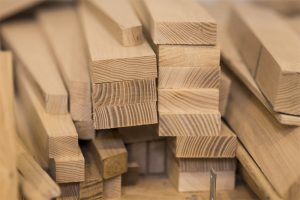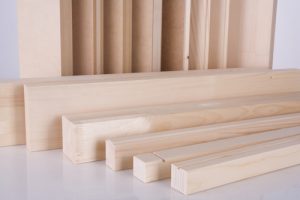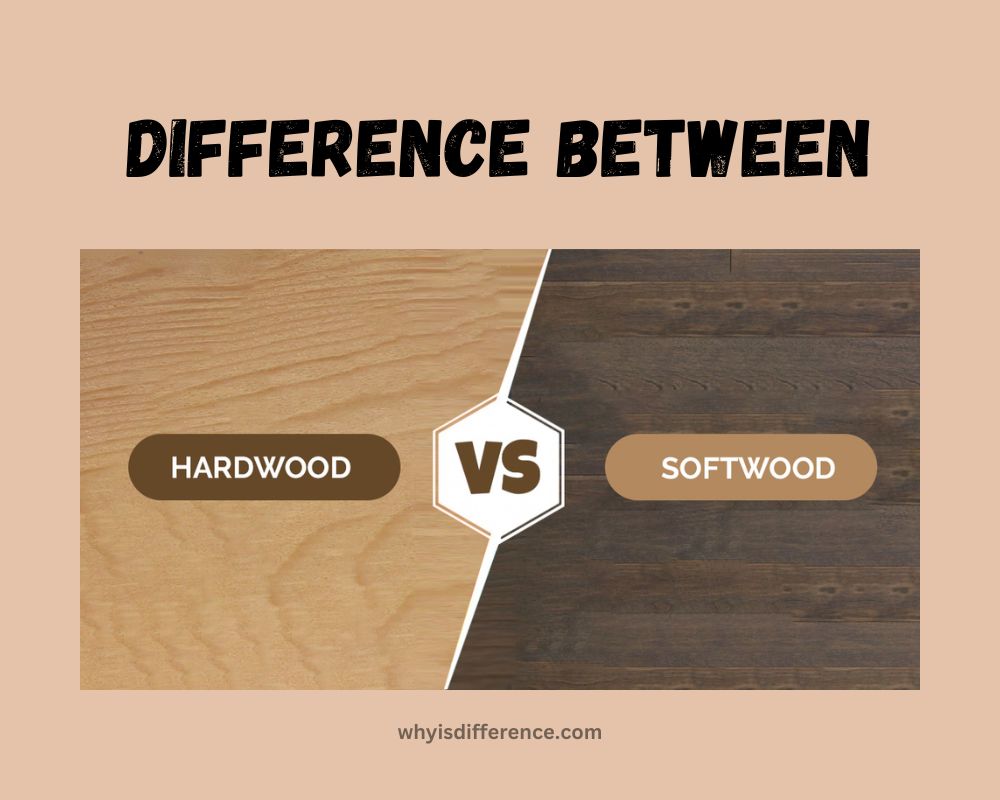Hardwood and softwood: are two main categories of wood used in lumbering and woodworking, though this term doesn't indicate whether one is harder or softer in reality. Their differences lie more within their origins in nature and the characteristics they possess which lend themselves well for different applications; anyone using wood in construction, furniture production or any other project should become familiar with these distinctions; we will explore them further along with their applications, availability and maintenance considerations.
Importance of understanding the differences
The differences between hardwood and softwood for various reasons of vital importance:
- Material Selection: Understanding the differences between hardwoods and softwoods helps make informed material selection decisions. Each application may call for different kinds of wood depending on factors like strength, durability, and appearance; being familiar with their characteristics helps one select the ideal wood type for their specific task and ensure optimal performance.
- Structural Integrity: Hardwoods and softwoods feature distinct cellular structures that directly impact their strength and density. Because hardwood has more complex cell structures, it tends to be stronger and denser; making it the superior choice for applications requiring structural integrity or durability. Softwoods tend to be lighter-weight or flexible solutions.
- Aesthetics: Hardwood and softwood have their own distinct visual traits, such as color, grain patterns, and textures that you should know about before selecting furniture, flooring or decorative products made out of them. Selecting the correct wood type will enhance its visual appeal and help achieve your desired look.
- Environmental Impact: For responsible resource management, it is critical to recognize the differences in sustainability and availability between hardwoods and softwoods. Hardwood species grow slower and tend to inhabit limited locations, leaving them more susceptible to overexploitation than softwood varieties that are more abundant but can still be harvested sustainably. Understanding these aspects will enable individuals to make environmentally-sensitive choices that support sustainable practices and forest preservation.
- Cost Considerations: Hardwood and softwood prices can fluctuate based on factors like availability, demand, and processing needs. Understanding these price fluctuations will enable you to make more cost-effective decisions and better plan your budget. Be mindful of costs to find an appropriate balance between quality and price for your project.
Understanding the differences between softwood and hardwood enables individuals to make more informed decisions regarding material selection, aesthetics, and environmental impact when it comes to woodworking projects. With this knowledge comes precision, durability, and sustainability all being taken into consideration during the execution of woodworking projects.
Definition and Characteristics
A. Hardwood:

Hardwood comes from angiosperms, which are broad-leaved trees with either deciduous or evergreen leaves and is distinguished from softwood by its dense and complex cellular structure, giving rise to higher densities than softwood species. Hardwood species are cherished for their strength, durability, and resistance to wear as well as their wide array of colors, grains patterns, textures, and surface qualities.
- Common Hardwood Species are Oak, Maple, Mahogany, Walnut Cherry Ash Teak; Hardwood is generally heavier and denser than its softwood counterpart.
- Hardwoods are known for their durability, resistance to scratches and denting, and impacts.
- Hardwood is stronger and better suited to heavy-duty applications than any other material.
- With an array of colors, grains patterns, and textures available, hardwoods make an excellent choice for woodworking projects.
B. Definition of Softwood

Softwoods are gymnosperms with needle-like and scale-like leaves that produce wood that varies in composition between soft and hard types, typically consisting of simpler cell structures with long tracheids that give a smooth surface finish. Hardwood is usually heavier and denser than its softwood counterpart and is widely used for construction, furniture manufacturing, and paper production due to its availability and versatility.
- Common softwood species are Pine, Spruce, Cedar Fir, and Hemlock. Their physical characteristics mainly consist of being lighter and less dense.
- Softwood offers great flexibility, making it easier to shape and work.
- Softwood species are more abundant and widely distributed than their hardwood counterparts, enabling them to be utilized for an array of applications.
- Softwood trees tend to be more cost-effective due to their readily-availability and fast growth rate.
The qualities and characteristics of both hardwoods and softwoods will enable you to appreciate their distinctive features, and make more informed decisions regarding their usage in woodworking projects.
Structural Differences
Hardwood wood boasts an intricate cell structure which increases its strength and density.
Hardwood cells can be described in these ways:
- Hardwood trees contain vessels or pores. These tubular structures transport water and nutrients throughout their tree's core, as well as creating distinct grain patterns. Hardwood's vessels account for this characteristic feature.
- Hardwood trees are composed of long fibers with thick walls that support and strengthen them; this contributes to its density and durability.
Impact on Density and Strength:
- Hardwood is an exceptionally dense and robust material due to its vessels and fibers.
- Hardwood surfaces are distinguished by their natural beauty, distinct grain patterns, and intricate cell structure.
B. Softwood Cell Structure:
- Softwood trees feature an easier cell structure than hardwood ones, composed primarily of long tracheids.
- Tracheids - Softwoods can be recognized by their distinctive tracheids - long cellular structures which provide support and water transport, creating an elongated grain pattern in their pattern of cells.
Impact on Density and Strength:
- Softwood species feature lower densities due to their simpler cell structures consisting of predominantly tracheids.
- Softwood may not have as many dense fibers, but its lower density offers many advantages; including being flexible and workable - two traits that make it suitable for various applications.
Understanding the structural differences between hardwood and softwood can provide insight into their varied characteristics and performances. Hardwoods' complex cellular structures with vessels and fibers contribute to their strength, density, aesthetic appeal, and ease of working with these materials while softwoods' simpler structures with tracheids offer flexibility and easy working processes for their materials. Understanding these distinctions between hard and soft wood may influence which species to select based on desired strength density requirements or other considerations.
Applications and Uses
Wood Applications: Wrought iron's strength, aesthetic qualities, and low maintenance make it the ideal material for construction, furniture making and other purposes. It has become the material of choice in modern construction projects as well as architectural furniture manufacturing projects.
Construction and furnishings
- Due to its strength, hardwood is commonly utilized as structural elements of buildings such as beams, floors, and decking.
- Furniture made of wood provides high-quality furniture, such as tables, chairs, and cabinets; bed frames made of wood provide durability as well as elegance.
Flooring and decking
- Hardwood flooring offers both beauty and durability to both residential and commercial environments.
- Hardwood decking is an eco-friendly outdoor surface that stands up well against weather and foot traffic.
Cabinetry and millwork
- Wood is often chosen for cabinetry, countertops, and custom millwork due to its durability and stunning aesthetic qualities.
- Wood can be easily crafted into intricate designs with precision carving.
B. Softwood applications:
- Softwood is an economically feasible material that is widely utilized across multiple industries, from construction to manufacturing.
Construction and Framing of Buildings:
- Softwood lumber has become increasingly popular for use in framing walls, floors, and roofs due to its strength and lightweight nature.
- Lumber is an essential building material, providing structural support to both residential and commercial structures.
Paper and pulp manufacturing:
- Softwood fibers with long fiber lengths and yield are used in paper production and pulp manufacturing processes.
- Softwood pulp can be found in various paper products such as magazines, newspapers, packaging material, and tissue paper.
Furniture and Decorative Items
- Furniture pieces such as chairs, tables, and shelving units often made from softwood are widely popular among markets with greater cost considerations.
- Material made of wood is often used to craft decorative items like paneling, trim moldings, and ornamental carvings.
Hardwood and softwood both offer multiple uses. Hardwood excels at areas requiring strength, durability, refined aesthetics, and cost-effective manufacturing and construction processes while softwood provides cost-cutting manufacturing and construction alternatives. Deciding between them comes down to budget considerations, personal aesthetic preferences, and project requirements.
Availability and Sustainability
Hardwood species can be found in certain geographic regions throughout the world; their availability varies accordingly.
Geographic Regions:
- Hardwood species inhabit various geographic locations. Oak is prevalent throughout North America and Europe while teak is native to Southeast Asia.
- Regional factors may impact product availability, such as climate conditions, soil characteristics, and previous logging practices.
Common Hardwoods include:
- Certain exotic hardwoods such as mahogany and ebony may be limited due to a lack of resources or regulations that protect endangered species.
- Softwood species can be found worldwide and in all kinds of regions.
Geographic Regions:
- Softwood species can be found across North America and Europe.
- Softwood trees can be found across the world due to their widespread distribution. Different species thrive in various climates and ecosystems.
Softwoods commonly found in the market:
- Softwood trees such as pine, spruce, and cedar can often be found growing abundantly.
- Rapid expansion and widespread distribution make these products readily accessible on the market.
Environmental Considerations and Sustainable Practices:
- Sustainable forestry practices such as selective logging and reforestation are integral for protecting hardwood and softwood resources and their availability.
- Sustainable practices in the woodworking industry center around responsible wood procurement and its utilization, while simultaneously striving to reduce waste and promote recycling.
- To preserve forests and biodiversity, it is vital that sustainable and legal sources of wood be used while still meeting the demand for wood-based products.
Consideration of the sustainability and availability of hardwood and softwood timber can help promote environmentally responsible decisions. Promoting sustainable forestry through supporting sustainably sourced hardwoods aids forest preservation while guaranteeing sufficient wood supplies for future generations.
Maintenance and Care
Hardwood requires regular care to maintain both its beauty and durability.
A.Clean and Polish:
- Dust and debris can leave scratches behind; to eliminate them quickly and safely, regularly sweep or vacuum your house or take other measures to clear away accumulated dust or dirt.
- Use a nonabrasive damp cloth and mild wood cleaner specifically designed for hardwood surfaces to gently polish them.
- To prevent stains or warping, avoid excessive moisture and clear up any spills immediately.
- Apply a high-grade wood polish or wax to protect and restore its shine.
Protection against moisture and pests
- Protective mats and rugs can be useful in areas with heavy foot traffic to reduce wear, prevent scratches and avoid potential slip-ups.
- Put felt pads beneath the legs of the furniture to protect the floor from scratches.
- To avoid excessive expansion and contraction of wood, ensure the humidity level remains constant.
- Preventing termites by treating wood or using pest control measures.
B. Softwood maintenance tips:
Softwood furniture requires regular care to preserve and protect it for as long as possible.
Sealing and staining:
- Seal the softwood against moisture damage, UV exposure, and staining by applying a wood sealant.
- To keep sealant at its most effective, inspect it regularly and reapply as necessary.
- Staining softwood will both enhance its color and add protection against damage.
Regular maintenance for durability:
- To eliminate dust and debris, wipe down surfaces using a soft cloth or brush.
- Avoid using tools or cleaners which might damage the surface of softwood.
- If any damage to the softwood occurs, such as splits or cracks, take immediate steps to address it.
- For increased durability in outdoor applications, consider coating surfaces with protective varnish or coating to increase durability.
Maintenance and care can extend the lifespan of hardwoods and softwoods, maintaining them in top condition for years. By following proper cleaning routines and protecting against moisture intrusion, pests, and maintenance issues, people can enjoy both its beauty and durability for many years to come.
Cost Considerations
A. Hardwood cost factors:
- Species and availability
- Common hardwood species tend to be more cost-effective due to their accessibility.
- Due to increased demand and limited supply, exotic hardwood species may become more expensive.
- Quality and Grade:
- Wrought-iron hardwood that features fewer defects and knots is often more costly.
- Hardwoods that are of premium quality or have distinctive characteristics such as extra processing may command higher prices.
- Process and Finishing:
- Hardwood products can become more costly if they undergo additional processes such as kiln drying, milling or special finishes.
- Pre-finished hardwoods that have been subject to factory treatments with protective coatings may be more expensive than unfinished versions.
B. Softwood lumber costs:
Due to its wider availability, softwood is usually more affordable than hardwood.
- Market demand and species:
- Softwoods like pine and spruce trees tend to be more cost-effective due to their wider availability.
- Prices for less commonly used softwood species or those deemed specialty may be higher depending on availability and specific characteristics.
- Quality and Grade:
- Softwoods of higher grades and more uniformity may command higher prices than hardwoods.
- Prices may be higher for specialty softwood products such as premium-grade lumber or clear wood.
- Treatment and Processing:
- Ignoring these factors could increase softwood product prices significantly. Additional processing such as pressure treatment, planing for outdoor use or applying special finishes could further shave costs off this product line.
When making the choice between hardwood and softwood, cost factors should always be a priority. Hardwood typically costs more than its softwood counterpart due to the variability of species, grade, quality, and market demand factors that affect its price; softwood is generally more cost-effective and readily available, making it suitable for projects on a tight budget where hardwood characteristics aren't essential.
Conclusion
The distinction between softwood and hardwood lies in their botanical classifications rather than the degree of their hardness. Hardwoods, which originate from angiosperms, generally contain complex structures, which makes them more dense and robust. They are commonly employed in flooring, furniture and woodworking projects that are high-end. However softwoods, derived made from gymnosperm trees are more compact and tend to be less dense, which makes them much easier to use. Softwoods are used extensively in paper production, construction and a variety of outdoor applications. Understanding the distinctions between softwood and hardwood enables us to make informed decisions when selecting the appropriate materials for particular projects and uses.

